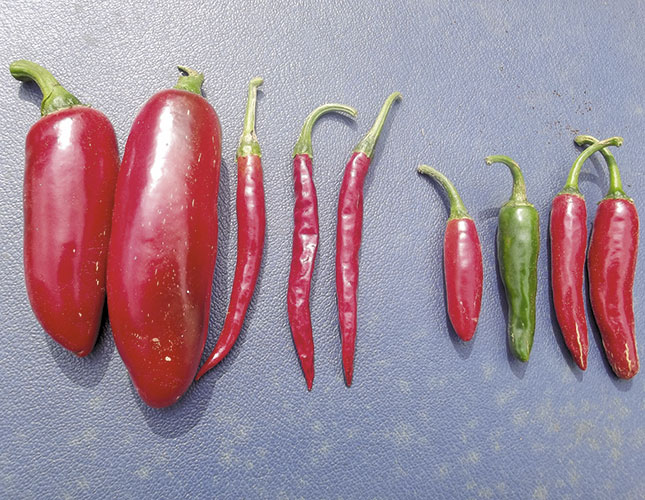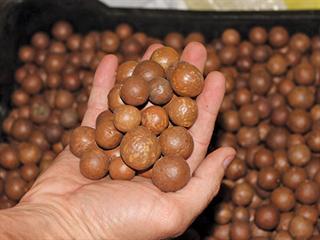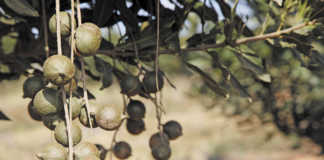
Photo: Bill Kerr
I am often asked what the best variety of chilli is. If only it were that simple! There are many varieties on the market for a very good reason. Tastes differ from country to country, and different dishes require different types of chillies or peppers.
Understanding different types of chillies
I once had a South Korean seed catalogue devoted entirely to chillies. As South Africans tend to prefer rather pungent chillies, I was drawn to a description of one variety that stated it was “hot enough for anyone”.
As the size conformed to our specifications, I secured a sample – and found that it was far too mild for our market.
The Koreans eat a huge amount of chillies, but clearly the ‘chilli taste’ is more important to them than the ‘burn’. Also, if they are milder, you can eat more of them and so experience more of the health benefits associated with chillies. Farmers can grow more too.
Size, shape and colour
The appearance also makes a difference. Consumers become accustomed to a certain type and will often be reluctant to try another. For a producer to switch to another shape, size or colour can be very risky and usually requires promotion and a gradual introduction.
Our market prefers a dark green chilli, and producers tend to take this into account when choosing varieties to present to the market. This often limits choice. For example, a farmer might have a higher-yielding, disease-resistant variety with the correct pungency – only to have it rejected by consumers because they are not familiar with the colour.
Preferences
In South Africa, the original cayenne type of chilli has given way to higher-yielding hybrids of similar appearance. These are thin-walled and highly pungent, and our Indian population tends to favour this type for cooking.
The bullet-type serrano pepper became hugely popular here since it was introduced some years ago. It has a medium wall thickness but the fruits are only 3cm to 4cm long and harvesting is labour-intensive. As a result, longer versions with the same wall thickness and pungency are now making their mark.
The jalapeño (pronounced halapeenyour) types are gradually gaining a foothold here. They are very popular in Mexico and the USA, and South Africans are keen to try them out.
There are many variants in different shades of green, and the pungency can differ markedly as well. However, as this type became so popular overseas due to its flavour, it would be a pity to mask this with excessive pungency. The lingering flavour after the initial burn is very pleasant indeed. I foresee it gaining in popularity.
There is also likely to be a swing to larger fruit in all categories due to the high, and increasing, cost of labour. Producers can reduce the cost per kilogram quite significantly simply by planting a larger variety, or even one with thicker walls where this is acceptable.
At the same time, many chilli producers plant several varieties to cater for different market requirements.
Bacterial and viral diseases
Another consideration is disease resistance. Diseases differ from region to region, and some may be seasonal. A soil disease such as bacterial wilt, for example, can be a limitation in some areas but not in others.
Virus diseases can also be a problem in certain areas, especially where chillies are grown throughout the year.
So it makes sense to establish which diseases are common in your area and then choose a resistant variety accordingly. In short, do your homework before embarking on chilli production, taking all these aspects into consideration. Farming has become too expensive to take chances!













